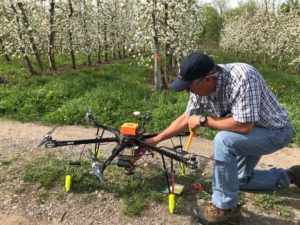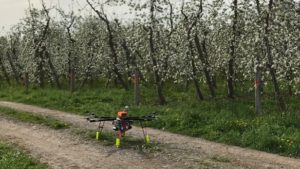A large percentage of the world’s food production rely on bee pollination. For many years commercial bee farmer bring their hives to different agricultural fields to help with the pollination process. As you probability know, for a variety of reasons that is still unclear the population of bees are declining and are subject to huge variations from year to year which is effecting crop outputs worldwide.

Weather can also play a part. If it’s too cold, too hot or too windy in the critical flowering periods of certain food crops, bees can’t get the job done nearly as well. Pollination rates can suffer and yields can drop, pushing prices up for staple fruits, nuts and vegies and generally causing pain in the market.
As an aside, here are some famous bee keepers from BeeColony.
As an aside, here are some famous bee keepers:
Sir Edmund Hillary (1919 – 2008) The first western to climb Mt. Everest
Maria von Trapp (1905-1987) Of Sound of Music Fame
Sylvia Plath (1932 -1962) Pulitzer Prize for her work The Collected Poems
Steve Vai (1960 – Present) Three time Grammy award winning Rock and Roll artist
Martha Stewart (1941 – Present) Got into it based upon gardening and has written about it
Peter Fonda (1940 – Present) Actor
Morgan Freeman (1937 – Present) Actor
Scarlett Johansson (1984 – Present) Actor
As a bonus question, who is the most famous fictional bee keeper? Sherlock Holmes, of course, when he retired to a life of bee keeping.
But back to drones, startup company Dropcopter, operating out of San Francisco and New York City, believes UAVs might be a solution. It’s been testing aerial drone pollination across almond, cherry and apple crops in the United States and seeing some impressive results.

Dropcopter UAV pollination may be less efficient than bee pollination, but is more reliable
Dropcopter’s autonomous drones are programmed to fly over the rows of crops in flower, dropping pollen onto them en masse. It’s a far less efficient solution than bee pollination – bees are beautifully adapted to do the job. They visit individual flowers and shake the pollen out of them, collecting it on hairs all over their bodies and visiting multiple plants in an outing before taking the protein-rich pollen back to the hive to feed their young. They do their task with excellent precision.
Dropcopter’s solution of pollen-bombing the crops is more akin to the way grasses reproduce, dusting an entire area with airborne pollen and relying on sheer numbers in the hope that a tiny percentage will land in the right spot. This may not be an ideal solution for allergy sufferers.
Still, desperate times may call for desperate solutions. You’d imagine it’s best to bomb the crops after the bees have operated, because otherwise the bees might be delighted to find massive air-drops of pollen all over the place, and adapt to a new, plentiful food source that doesn’t require them to go to work at all.
In test results quoted by sUAS News, Dropcopter claims it’s been able to boost crop pollination by between 25 and 60 percent in cherries and almonds, depending on conditions during the flower bloom. With almonds, the gain is more like 10 percent. Testing will continue as Dropcopter seeks further investment. This is good news for primary producers, with the potential to perform well in a wider range of weather conditions as well as boosting production even in the best circumstances.
Some content orginally published in New Atlas.







